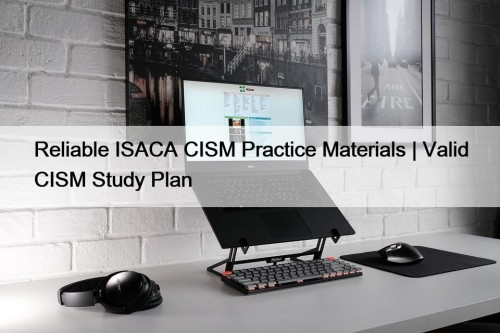Most Popular
 MCD-Level-2 Test Preparation - Free PDF MCD-Level-2 - First-grade Valid Exam MuleSoft Certified Developer - Level 2 (Mule 4) Vce Free
MCD-Level-2 Test Preparation - Free PDF MCD-Level-2 - First-grade Valid Exam MuleSoft Certified Developer - Level 2 (Mule 4) Vce Free
First and foremost, the pass rate on our MCD-Level-2 exam ...
 100% Pass Quiz Salesforce - JavaScript-Developer-I - Useful Test Salesforce Certified JavaScript Developer I Exam Score Report
100% Pass Quiz Salesforce - JavaScript-Developer-I - Useful Test Salesforce Certified JavaScript Developer I Exam Score Report
If you are interested in purchasing valid and professional test ...
 Reliable ISACA CISM Practice Materials | Valid CISM Study Plan
Reliable ISACA CISM Practice Materials | Valid CISM Study Plan
What's more, part of that Test4Sure CISM dumps now are ...



CKAD Certification Practice - CKAD Test Free

P.S. Free 2025 Linux Foundation CKAD dumps are available on Google Drive shared by Actualtests4sure: https://drive.google.com/open?id=1POYe1wxylyhV1CcPlR6i0k5l9y7mjqrd
Never say you can not do it. This is my advice to everyone. Even if you think that you can not pass the demanding Linux Foundation CKAD exam. You can find a quick and convenient training tool to help you. Actualtests4sure's Linux Foundation CKAD exam training materials is a very good training materials. It can help you to pass the exam successfully. And its price is very reasonable, you will benefit from it. So do not say you can't. If you do not give up, the next second is hope. Quickly grab your hope, itis in the Actualtests4sure's Linux Foundation CKAD Exam Training materials.
The CKAD certification is highly regarded in the industry and is recognized by many employers as a valuable credential for Kubernetes developers. Linux Foundation Certified Kubernetes Application Developer Exam certification demonstrates a candidate's ability to work with Kubernetes in a professional setting and shows that they have the skills and knowledge required to deploy and manage applications on Kubernetes clusters. The CKAD Certification is a great way for developers to showcase their skills and advance their careers in the fast-growing field of Kubernetes development.
>> CKAD Certification Practice <<
CKAD Test Free, CKAD Premium Exam
As the saying goes, time is the most precious wealth of all wealth. If you abandon the time, the time also abandons you. So it is also vital that we should try our best to save our time, including spend less time on preparing for exam. Our CKAD guide torrent will be the best choice for you to save your time. The three different versions have different functions. If you decide to buy our CKAD Test Guide, the online workers of our company will introduce the different function to you. You will have a deep understanding of the three versions of our CKAD exam questions. We believe that you will like our products.
Linux Foundation Certified Kubernetes Application Developer Exam Sample Questions (Q188-Q193):
NEW QUESTION # 188
You have a Deployment named 'web-app-deployment that runs 5 replicas of a web application container. You need to ensure that only one pod iS updated at a time during a rolling update. Additionally, you want to set the update strategy so that no more than 2 pods are unavailable at any given time.
Answer:
Explanation:
See the solution below with Step by Step Explanation.
Explanation:
Solution (Step by Step) :
I). Update the Deployment YAMI-:
- Update the 'replicas' to 5.
- Define 'maxunavailable: 1 ' and 'maxSurge: 2 in the 'strategy.rollingUpdate' section to control the rolling update process.
- Configure a 'strategy.types to 'RollinglJpdate' to trigger a rolling update when the deployment is updated.
2. Create the Deployment: - Apply the updated YAML file using 'kubectl apply -f web-app-deployment-yamr 3. Verify the Deployment: - Check the status of the deployment using 'kubectl get deployments web-app-deployment to confirm the rollout and updated replica count. 4. Trigger the Automatic Update: - Push a new image to the 'web-app-image:latest' Docker Hub repository 5. Monitor the Deployment: - Use 'kubectl get pods -I app=web-app' to monitor the pod updates during the rolling update process. You will observe that one pod is terminated at a time, while one new pod with the updated image is created. Additionally, you'll see that the number of unavailable pods never exceeds 2. 6. Check for Successful Update: - Once the deployment is complete, use "oubect1 describe deployment web-app-deployment' to see that the 'updatedReplicas' field matches the 'replicas' field, indicating a successful update.
NEW QUESTION # 189 
Given a container that writes a log file in format A and a container that converts log files from format A to format B, create a deployment that runs both containers such that the log files from the first container are converted by the second container, emitting logs in format B.
Task:
* Create a deployment named deployment-xyz in the default namespace, that:
*Includes a primary
lfccncf/busybox:1 container, named logger-dev
*includes a sidecar Ifccncf/fluentd:v0.12 container, named adapter-zen
*Mounts a shared volume /tmp/log on both containers, which does not persist when the pod is deleted
*Instructs the logger-dev
container to run the command
which should output logs to /tmp/log/input.log in plain text format, with example values:
* The adapter-zen sidecar container should read /tmp/log/input.log and output the data to /tmp/log/output.* in Fluentd JSON format. Note that no knowledge of Fluentd is required to complete this task: all you will need to achieve this is to create the ConfigMap from the spec file provided at /opt/KDMC00102/fluentd-configma p.yaml , and mount that ConfigMap to /fluentd/etc in the adapter-zen sidecar container See the solution below.
Answer:
Explanation:
Explanation
Solution:





NEW QUESTION # 190
You are designing a container image for a Pytnon application tnat uses a specific version of a Pytnon library C requests'). You want to ensure that this specific library version is always used, regardless of the host system's installed version. Explain how you would achieve this within your Docket-file.
Answer:
Explanation:
See the solution below with Step by Step Explanation.
Explanation:
Solution (Step by Step) :
1. Install Library in Dockerfile:
- Utilize the 'COPY' instruction in your Dockerfile to copy a requirements file containing the exact library version you need.
- Use the 'RIJN' instruction to install the library from the requirements file.
- Example:
dockeflle
FROM python:3S
COPY requirements.txt
RUN pip install -r requirements-txt
COPY
CMD ["python", "app.py"l
2. Create Requirements File ('requirements.txt'):
- Create a 'requirements-txt' file within your project directory.
- Add the specific version of tne 'requests' library to this file.
- Example:
Requests==2.28.1
3. Build the Docker Image:
- Construct your Docker image using the Dockeflle.
- Run tne following command: 'docker build -t your-image-name .
4. Run the Container:
- Launch the container in Kubemetes.
- Verify that the 'requests' library with the specified version is successfully used within the container.
NEW QUESTION # 191
You are building a system for scheduling daily backups of a critical database. The backup process involves running a script that connects to the database, extracts tne data, and saves it to an S3 bucket. How would you utilize Kubernetes JobS to automate this backup process and ensure it runs every day at 2:00 AM?
Answer:
Explanation:
See the solution below with Step by Step Explanation.
Explanation:
Solution (Step by Step) :
1. Create a Job YAML file.
- Replace 'your-backup-script-image:latest With the actual image name of your backup script. - Replace 'your-backup-script.sn' with the actual name Of your backup script. - Replace saws-secret' with the name of the Kubernetes secret holding your AWS credentials (see step 2). - 'restartPolicy: Never ensures the job runs only once. 2. Create a Secret for AWS Credentials:
- Replace ''and'' With your actual AWS credentials. 3. Create a CronJob YAML file:
- Adjust the 'schedules to your desired daily execution time. - Ensure the 'jobTemplate' matches the Job YAML definition. 4. Apply the YAML files: - Use 'kubectl apply -f job.yamr and 'kubectl apply -f cronjob.yamr to create the Job and CronJob on your cluster 5. Verify the CronJob: - Use ' kubectl get cronjobs' to check the status of the CronJob- - You should see the CronJob running and triggering the Job at the specified time.
NEW QUESTION # 192
You are tasked with setting up a secure Kubernetes cluster for a web application. The application has sensitive data that must be protected. You need to configure a mecnanism to restrict access to the application's pods based on user identities. Describe a method to achieve this using Kubernetes RBAC and Service Accounts, ensuring that only authorized users can access specific pods.
Answer:
Explanation:
See the solution below with Step by Step Explanation.
Explanation:
Solution (Step by Step) :
1. Create a Service Account
- Create a Service Account for the application:
- Apply the Service Account configuratiom basn kubectl apply -f webapp-sa.yaml 2. Create a Role: - Define a Role that grants access to the specific pods:
- Apply the Role configuratiom bash kubectl apply -f webapp-pod-reader.yaml 3. Create a RoleBinding: - Bind the Role to the Service Account
- Apply the RoleBinding configuration: bash kubectl apply -f webapp-pod-reader-binding_yaml 4. Configure the Application: - When deploying the application, specify the Service Account:
5. Verify Access: - Use the 'kubectr command with the Service Account's credentials to verify that only authorized users can access the application's pods: bash kubectl -service-account=webapp-sa get pods -n This setup utilizes Kubernetes RBAC to control access to the application's pods. - The Service Account acts as an identity for the application. - The Role defines the permissions granted to the Service Account, specifically allowing access to the pods. - The RoleBinding associates the Role with the Service Account, linking the permissions to the identity. - When the application is deployed witn tne specified Service Account, it inherits the permissions defined in the RoleBinding. This ensures that only users with the necessary credentials (associated with the Service Account) can access and interact with the application's pods, safeguarding sensitive data.
NEW QUESTION # 193
......
Customizable Linux Foundation Certified Kubernetes Application Developer Exam (CKAD) practice tests (desktop and web-based) of Actualtests4sure are made to ensure excellent practice of applicants. Users can take multiple CKAD practice exams. And the previous exam progress can be saved, so candidates can track it easily whenever they want to see the mistakes. The exam is tough to pass, and that's why CKAD provides our customers with all the best Linux Foundation CKAD exam dumps to pass the exam on the first try.
CKAD Test Free: https://www.actualtests4sure.com/CKAD-test-questions.html
- Test CKAD Guide 🧴 CKAD Latest Test Camp 🐲 CKAD Vce Test Simulator 🎭 Search for { CKAD } and easily obtain a free download on ⏩ www.prep4pass.com ⏪ 🐌CKAD Exam Cram
- Latest CKAD Test Fee 😏 New CKAD Test Materials 📷 Latest CKAD Test Fee ⛑ Simply search for { CKAD } for free download on ➡ www.pdfvce.com ️⬅️ 😆CKAD Latest Test Camp
- Free PDF Linux Foundation - CKAD - Linux Foundation Certified Kubernetes Application Developer Exam –High Pass-Rate Certification Practice 🏍 Search on “ www.prep4pass.com ” for “ CKAD ” to obtain exam materials for free download ⚜CKAD Vce Test Simulator
- 100% Pass-Rate Linux Foundation CKAD Certification Practice - Perfect Pdfvce - Leader in Certification Exam Materials ✡ Download ➽ CKAD 🢪 for free by simply searching on 【 www.pdfvce.com 】 🏑CKAD Latest Test Camp
- Free PDF Linux Foundation - CKAD - Linux Foundation Certified Kubernetes Application Developer Exam –High Pass-Rate Certification Practice 😚 Download ▷ CKAD ◁ for free by simply searching on ⇛ www.free4dump.com ⇚ 🩺CKAD Test Centres
- Quiz 2025 Linux Foundation CKAD – Valid Certification Practice ⏪ The page for free download of ➥ CKAD 🡄 on { www.pdfvce.com } will open immediately 🆒CKAD Dumps Reviews
- Why www.pass4test.com Is One Of The Best Platform To Prepare For Linux Foundation CKAD Exam? 👷 Immediately open ▶ www.pass4test.com ◀ and search for [ CKAD ] to obtain a free download 😷CKAD Valid Test Questions
- Free PDF Linux Foundation - CKAD - Linux Foundation Certified Kubernetes Application Developer Exam –High Pass-Rate Certification Practice 😏 Easily obtain free download of 《 CKAD 》 by searching on 《 www.pdfvce.com 》 🤍CKAD Valid Test Registration
- 100% Pass-Rate Linux Foundation CKAD Certification Practice - Perfect www.exam4pdf.com - Leader in Certification Exam Materials 🦯 Search for 【 CKAD 】 and obtain a free download on “ www.exam4pdf.com ” 👖Exam CKAD Revision Plan
- 100% Pass-Rate Linux Foundation CKAD Certification Practice - Perfect Pdfvce - Leader in Certification Exam Materials 🚕 Enter ⇛ www.pdfvce.com ⇚ and search for ⇛ CKAD ⇚ to download for free 🛺Latest CKAD Exam Registration
- 2025 Professional CKAD – 100% Free Certification Practice | CKAD Test Free 🧬 Enter ➽ www.itcerttest.com 🢪 and search for ✔ CKAD ️✔️ to download for free 🏩CKAD Knowledge Points
- CKAD Exam Questions
- www.seojaws.com technoeducat.com lms.bongoonline.xyz madonnauniversityskills.com.ng www.gadaskills.com smartearningacademy.com pianowithknight.com learnifybd.academy digitalmaking.net cursos.homgency.com
P.S. Free 2025 Linux Foundation CKAD dumps are available on Google Drive shared by Actualtests4sure: https://drive.google.com/open?id=1POYe1wxylyhV1CcPlR6i0k5l9y7mjqrd
Tags: CKAD Certification Practice, CKAD Test Free, CKAD Premium Exam, Vce CKAD File, Fresh CKAD Dumps